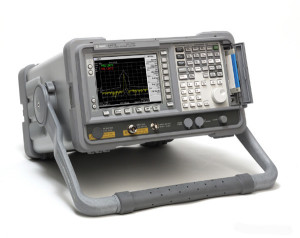Logic Analyzers Rent
HP Logic Analyzer – Agilent Logic Analyzer

A logic analyzer is an electronic instrument that captures and displays multiple signals from a digital system or digital circuit. A logic analyzer may convert the captured data into timing diagrams, protocol decodes, state machine traces, assembly language, or may correlate assembly with source-level software. Logic Analyzers have advanced triggering capabilities, and are useful when a user needs to see the timing relationships between many signals in a digital system
Shop For Logic Analyzers
Presently, there are three distinct categories of logic analyzers available on the market:
- Modular LAs, which consist of both a chassis or mainframe and logic analyzer modules. The mainframe/chassis contains the display, controls, control computer, and multiple slots into which the actual data-capturing hardware is installed. The modules each have a specific number of channels, and multiple modules may be combined to obtain a very high channel count. While modular logic analyzers are typically more expensive, the ability to combine multiple modules to obtain a high channel count and the generally higher performance of modular logic analyzers often justifies the price. For the very high end modular logic analyzers, the user often must provide their own host PC or purchase an embedded controller compatible with the system.
- Portable LAs, sometimes referred to as standalone LAs. Portable logic analyzers integrate everything into a single package, with options installed at the factory. While portable logic analyzers generally have lower performance than their modular counterparts, they are often used for general purpose debugging by cost conscious users.
- PC-based LAs. The hardware connects to a computer through a USB or Ethernet connection and relays the captured signals to the software on the computer. These devices are typically much smaller and less expensive because they make use of a PC’s existing keyboard, display and CPU, as compared to portable logic analyzers which must provide their own versions of all of that hardware.
Shop For Logic Analyzers
A logic analyzer can be triggered on a complicated sequence of digital events, then capture a large amount of digital data from the system under test (SUT).
When logic analyzers first came into use, it was common to attach several hundred “clips” to a digital system. Later, specialized connectors came into use. The evolution of logic analyzer probes has led to a common footprint that multiple vendors support, which provides added freedom to end users. Introduced in April, 2002, connectorless technology (identified by several vendor-specific trade names: Compression Probing; Soft Touch; D-Max) has become popular. These probes provide a durable, reliable mechanical and electrical connection between the probe and the circuit board with less than 0.5 to 0.7 pF loading per signal.
Once the probes are connected, the user programs the analyzer with the names of each signal, and can group several signals together for easier manipulation. Next, a capture mode is chosen, either “timing” mode, where the input signals are sampled at regular intervals based on an internal or external clock source, or “state” mode, where one or more of the signals are defined as “clocks”, and data are taken on the rising or falling edges of these clocks, optionally using other signals to qualify these clocks.
